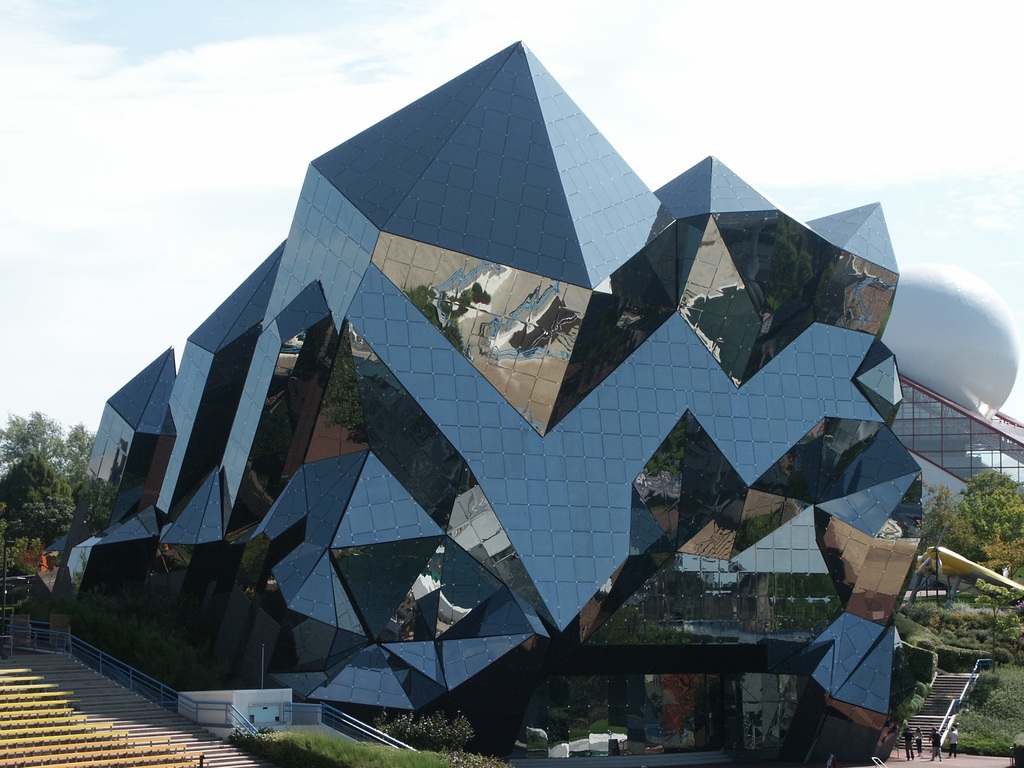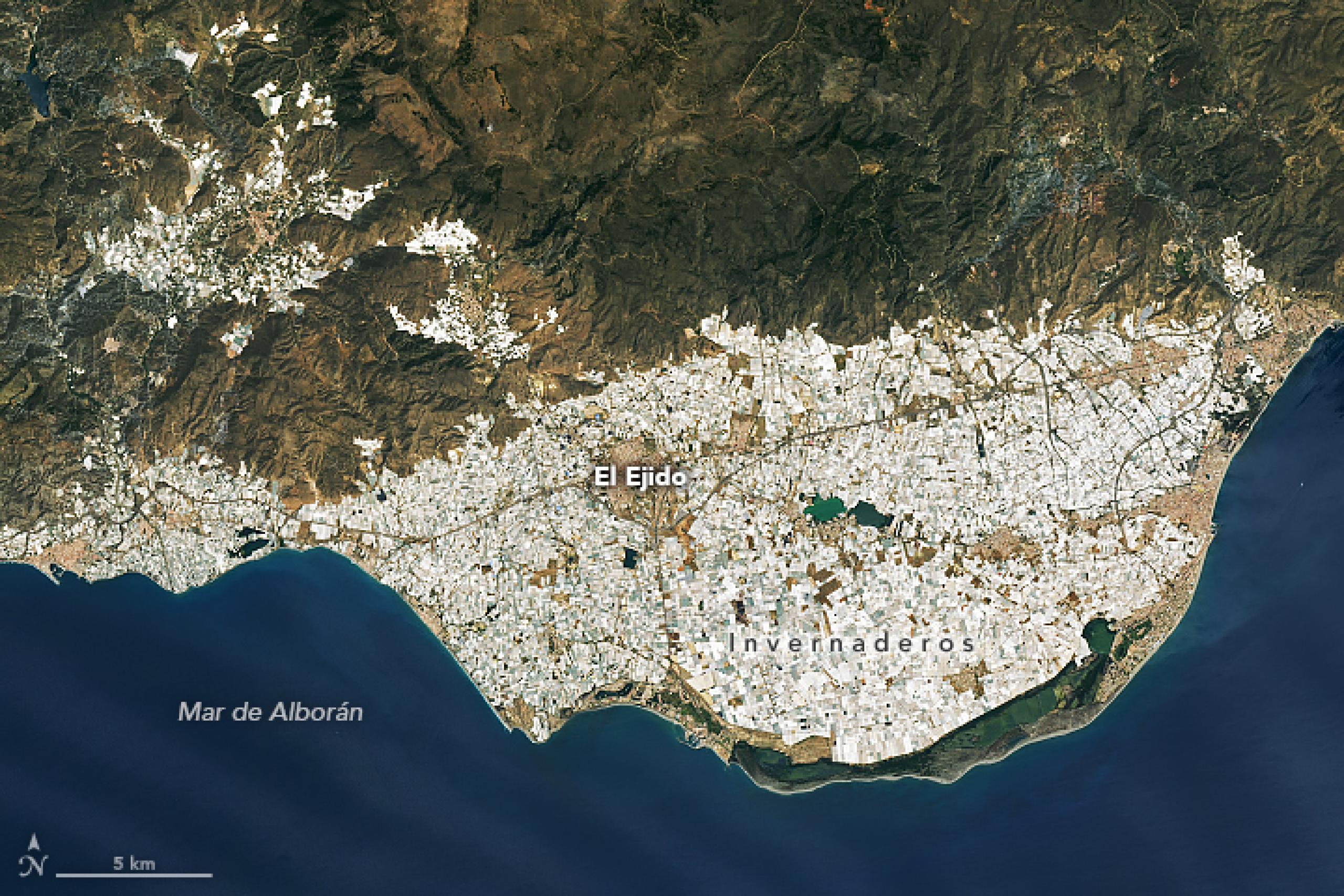🪩 Mirror Roofs
🥵 Some Solutions to Climate Change, Part 3
Climate change is upon us, and we want to do something about it. We already saw that we could plant some trees, but maybe we can do something closer to home. Why not put a mirror on your roof?

🪞 Put a Mirror on Top
Our second solution involves a little bit of creativity. Since the Earth is heated mainly by the Sun, why not divert some of that heat back to space?
Instead of installing dark roofs, like roofing tars, we may use a reflective cover. Apart from cooling the building itself, it will send those pesky infrared radiations back to space where they belong. It doesn’t even need to be a proper mirror, just some kind of surface that reflects most light in the infrared spectrum, which is what heats the Earth the most. So we don’t need expensive gold foil like in space telescopes; plain old aluminium foil is a good mirror for infrared light.
⚡ Efficiency
The first step for a crazy project like this should always be to do a Fermi estimation, to get an idea about its feasibility.
Let us estimate how much would roof mirrors affect the Earth’s
temperature. Again, we divide the problem into simpler estimations: how
much area of mirrors we can place on buildings A(mirror),
what percentage of the Earth surface we can cover
p(mirror), and then the proportion of heat we can send back
to space p(heat). Finally we can estimate how much can we
affect the temperature of the planet ΔT(mirror), where the
capital delta Δ represents the difference.
🧮 How Many Mirrors
Let us begin by estimating the area covered by buildings on the planet. How much space do we as a species actually occupy?
Let us say that each person on Earth lives in a room which is typically some 10 square meters. Add to that living quarters (kitchen, living room, bathroom) and it might be twice or three times the space; we will add twice the space, getting to 30 m² per person. In cities it will probably be less on average, since we live in buildings; in villages it is likely more than 30 m². A useful data point is that around half of the world population live in cities, so we can go with our average.

How much roofing is that? Again, people in cities live at several heights, while villages tend to be flatter. We can estimate a global average of two storeys, which gives us 15 m² of roof on top of every house.
Now we need to add all those buildings where we do our daily
activities: factories and shops, offices and malls, community buildings
and stadiums, museums and palaces. Let us add again about the same
amount of roofing for work, for shopping and for leisure; giving us a
total area per person, A(person):
A(person) ≈ 4 × 15 m² = 60 m².Now let’s compute the total of roofs, multiplying this average by the
number of people on the planet, N(people). Since we
recently crossed the mark of 8 billion
people:
A(buildings) = N(people) × A(person) ≈ 8 × 10^9 × 60 m² ≈ 5 × 10^11.This gives us a total area of around 500 billion square meters.
Converting to square kilometers with
1 km² = 1000000 m²:
A(buildings) ≈ 500 × 10^9 m² × 1 km² / 10^6 m² = 500 000 km².Close to half a million square kilometers.
🌐 Percentage of the Planet
What really interests us is the proportion of the total surface of
the planet that we can cover in mirrors, p(mirror).
Given that the Earth has 500 million km² including the oceans, we have at our disposal well below 1% of the total surface of the planet.
p(buildings) ≈ 500 000 km² / 500 000 000 km² ≈ 0.1%.One per thousandth! Or one part in a thousand. This doesn’t seem enough. We have to turn to other sources: perhaps consider all human-made structures. Adding roads and other pavimented surfaces we can perhaps push it a bit further; let us estimate twice as much.
p(mirror) ≈ 0.2%.Is this enough? Let us see.
☀️ Percentage of Heat
How much would 0.2% of mirror surfaces affect our temperature? Or put
another way, how much incoming heat can we reflect back to space,
p(heat)? Sadly, it is too optimistic to expect that we can
reflect 0.2% of heat. Our mirrors will not be perfect across all
wavelengths. As we saw above, about half
of the incoming energy is infrared, but there are many frequencies
of light involved.

Even worse, some of the sunlight will heat the atmosphere as it passes through it. That is after all the main greenhouse effect, and passing twice through the atmosphere (incoming and reflected) will increase its magnitude.
Glossing over these hairy details, we can grossly estimate that we
will be able to radiate only half the incoming heat. All in all, the
proportion of reflected heat p(heat) will be:
p(heat) ≈ p(mirror) / 2 ≈ 0.1%.And so we are back to one part in a thousand.
🥶 Expected Cooling
Now we can compute the expected cooling due to our shiny buildings and roads. This part is tricky. A very rough first estimate is based on this idea: apart from a little internal geothermal energy, the Earth gets most of its heat from the Sun, and most of it from infrared light. Therefore if we can radiate a part of this heat we will be able to lower the temperature accordingly.
Let’s work out the details. To ease our task we will work in kelvins, which are equal in magnitude to degrees Celsius but start at absolute zero (-273 C). The Earth temperature is right now close to 300 K. How much of that is due to the Sun?
This answer from StackExchange calculates that the Earth’s temperature would drop to 35 K (around -240 C) without our Sun. Chilly! We can assume that the Earth gets around 250 K hotter thanks to the Sun:
T(Earth) ≈ 250 K,and that it is linear: reducing sun heat by 1% would cool the Earth
by 2.5 K (or 2.5 C). So knowing our proportion of heat from before
p(heat):
ΔT(mirror) ≈ T(Earth) × p(heat) ≈ 250 K × 0.1% = 0.25 K.If we reflect 0.2% of the heat from the Sun we might decrease the temperature by around a quarter of a degree, Kelvin or Celsius. Not a lot. So this little project is perhaps not worth the hassle, at least globally.
🎚️ Some Checks
How well did we do with our Fermi estimates?
Let us check our estimate for p(buildings) with
independent data. According to NASA urban regions cover 0.2%
of the Earth’s land surface, same as our estimate. For another data
point: according to the Food and
Agriculture Organization of the UN, artificial surfaces cover 0.6%
of the land surface. For the total surface we have to multiply by the
proportion of land surface, or 150 / 500 million square km:
p(artificial) ≈ 0.6% × A(land) / A(Earth) ≈ 0.6% × 150 / 500 ≈ 0.18%.Again, very close. Our prediction of 0.2% was not bad at all! I have to admit that I tweaked it a bit after reading the above pages, but it’s nice to see that the numbers make sense.
💊 Side Effects
The geopolitical aspects of our little plan are messy. Getting an international agreement for roof mirrors would probably not be easy, and the logistics of wrapping all buildings in tinfoil can also be tricky.

The nice part of this project is that infrared mirrors on roofs would help cool our buildings, reducing the need for air conditioning. The same is true for windows by the way. Whole cities might also be cooler this way. Even for cold countries this effect would be welcome in summer. But globally it would hardly make a dent.
🌽 Shiny Crops
Can we do better? How about lining the Sahara with mirrors? What about other deserts? Without getting into details, maintenance would be horrible! But perhaps there is a better option: install reflective roofs on crops that are sensitive to heat.
There is precedent to that. I was born in Almería, near the sea of plastic: an area of almost a thousand square kilometers. There, a lot of white shiny plastic greenhouses are used to grow millions of tons of veggies (🇪🇸). And unlike the Chinese Wall, they can definitely be seen from space!

As a kind of wonky paradox, so many greenhouses are contrarresting the global greenhouse effect: it is estimated that they lower the temperature in the area around 0.8 C per decade (🇪🇸), because they reflect so much heat back to space. Of course it is just a local effect, but it shows how powerful reflecting sunlight can be.
Can this model be extended? There have been recent trials of combining solar panels with agriculture farms, with excellent results. Crop yields are improved by the combination. We can also combine solar panels with mirrors which increase their efficiency, plus also reflect unused sunlight back to space. Combined with large agricultural areas they might cover vast expanses of land, not just the puny 0.2% of the surface of the planet that we could muster only with buildings.
Imagine 5% of the land surface devoted to crops + solar power,
reflecting any excess heat back to space. Even if only 1/3 of the heat
was radiated back for our crops+solar project:
p(crops+solar) ≈ 1/3 × 5% × A(land) / A(Earth) ≈ 1/3 × 5% × 150/500 ≈ 0.5%,which would give us a temperature difference of:
ΔT(crops+solar) ≈ 1/3 × T(Earth) × p(crops+solar) ≈ 300 K × 0.5% = 1.5 K.Now 1.5 degrees are significant cooling. Our little mirror project could become a real game changer!
Even if the solar part is too complex, perhaps we can just use large aluminium foil panels above crops to both improve yields and cool the land around it. There are still the chemical consequences of having so much carbon dioxide in the atmosphere, but at least we might go back to tolerable temperatures.
🤔 Conclusion
In this installment we have done the opposite process than with planting trees: instead of estimating the amount of land necessary for a given effect, we have calculated the cooling effect given an existing proportion of land. In the process we built a Fermi estimation for how the Earth cools due to reflected sunlight, that has allowed us to explore other possible extensions. It is in fact so powerful that we will use it for our next installment.
Even some local cooling can be a welcome effect; and together with some other measures it can help relieve our poor overheated planet.
⏭️ To Be Continued
This is the third part of the series about climate change:
- Part 1: 🥵 Some Solutions to Climate Change,
- Part 2: 🌲 Planting Trees,
- Part 3: 🪩 Mirror Roofs,
- Part 4: 🛰️ Space Screens,
- Part 5: 🤔 Conclusion: Taking Action.
Enjoy!
Published on 2023-07-09, last modified on 2023-07-10. Comments, suggestions?
Back to the index.